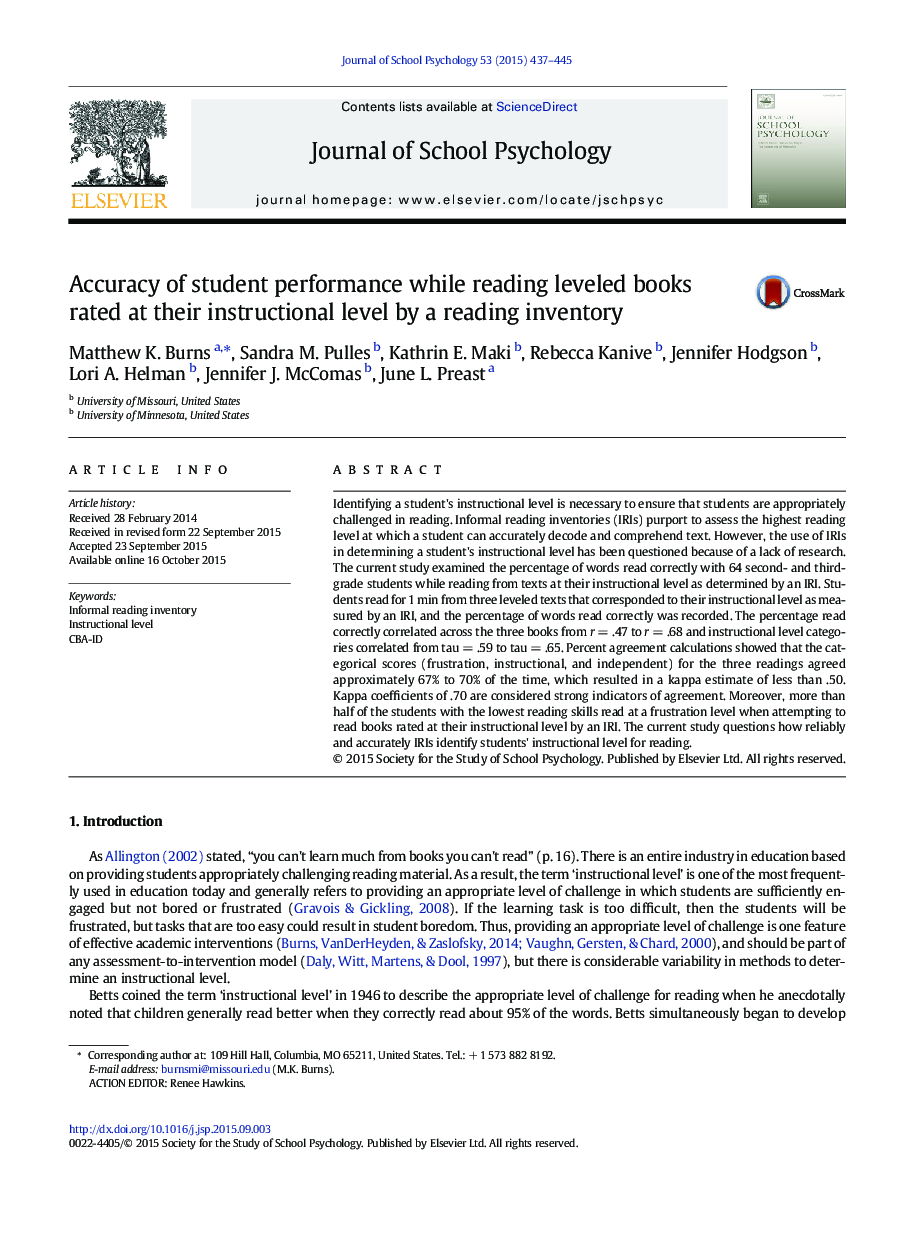| کد مقاله | کد نشریه | سال انتشار | مقاله انگلیسی | نسخه تمام متن |
|---|---|---|---|---|
| 363447 | 620696 | 2015 | 9 صفحه PDF | دانلود رایگان |
Identifying a student's instructional level is necessary to ensure that students are appropriately challenged in reading. Informal reading inventories (IRIs) purport to assess the highest reading level at which a student can accurately decode and comprehend text. However, the use of IRIs in determining a student's instructional level has been questioned because of a lack of research. The current study examined the percentage of words read correctly with 64 second- and third-grade students while reading from texts at their instructional level as determined by an IRI. Students read for 1 min from three leveled texts that corresponded to their instructional level as measured by an IRI, and the percentage of words read correctly was recorded. The percentage read correctly correlated across the three books from r = .47 to r = .68 and instructional level categories correlated from tau = .59 to tau = .65. Percent agreement calculations showed that the categorical scores (frustration, instructional, and independent) for the three readings agreed approximately 67% to 70% of the time, which resulted in a kappa estimate of less than .50. Kappa coefficients of .70 are considered strong indicators of agreement. Moreover, more than half of the students with the lowest reading skills read at a frustration level when attempting to read books rated at their instructional level by an IRI. The current study questions how reliably and accurately IRIs identify students' instructional level for reading.
Journal: Journal of School Psychology - Volume 53, Issue 6, December 2015, Pages 437–445
